Magical communion
Globetrotting travel photographer Terri Gold creates remarkable infrared images.
• February 2016 issue
Terri Gold unveils a common humanity
One friend told her she was crazy; another said she was insane. Others were even less kind. “I didn’t really blame them for telling me I was nutty to travel to Niger in West Africa in 2014,” says Manhattan-based Terri Gold. “After all, Ebola had recently broken out [in West Africa] and the U.S. State Department was warning against traveling to much of the country.” The Peace Corps and other NGOs had already pulled out of Niger due to threats from extremist groups such as Boko Haram.
But Gold was unfazed. The globetrotting photographer had already traveled to Rajasthan, India; the Omo Valley, Ethiopia; Lhasa, Tibet; Kham, China, and a slew of other hard-to-reach, often dangerous places to document what she calls “cross-cultural moments in time” and “the unguarded moment.”
Ever since she’d seen photographer Carol Beckwith’s 1983 book, “Nomads of the Niger,” she’d wanted to visit the landlocked country, hoping to photograph the Wodaabe nomads as they celebrate their annual weeklong courtship ritual, the Guerewol Festival. “I’m pretty stubborn once I’ve set my mind on doing something,” explains Gold. “Besides, this was a once-in-a-lifetime kind of trip.”
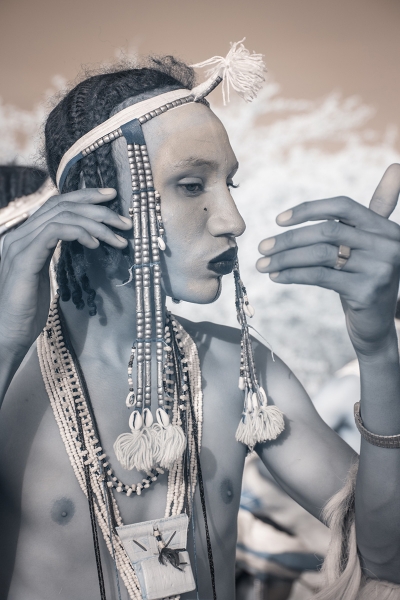
Greater risk, greater reward
That said, an email from the trip’s Africa-based organizer did give her pause. “She was writing to reassure us,” remembers Gold, who planned to travel to Niger with two other photographers. “She told us, ‘Don’t worry. We will have 20 armed guards with .50 caliber machine guns to accompany us, and it would take a multi-vehicle convoy to attack us.’” Gold pauses and adds, “We talked about calling off the trip but this was too good an adventure to cancel.”
Her persistence and courage paid off. The remarkable images she captured during her three-week adventure have earned her numerous national and international awards and have been reprinted in online media, including the Huffington Post and the BBC. But more important to Gold is that they’re the latest contributions to her lifework, a yet-to-be-published series of rituals and celebrations she’s photographed all around the world, dubbed “Still Points in a Turning World.”
The collection’s T.S. Eliott-inspired title refers to rituals and moments that tie all people together, she says. Gold began her photography career shooting weddings and was intrigued by how vulnerable people acted during what she calls “grace moments.” “I loved capturing people’s emotions and how they were feeling during these special, unguarded moments,” she says. “I am not showcasing otherness, but rather providing a window on our common humanity.”
Gold has exhibited her work in Spain, San Francisco, Los Angeles, New York City, Colorado, Vermont and at the Annenberg Space for Photography. She’s now preparing to exhibit her body of work, “Still Points in a Turning World,” which features images of people and cultural diversity from around the globe. Recent awards include the International Photography Awards and the Prix de la Photographie Paris.
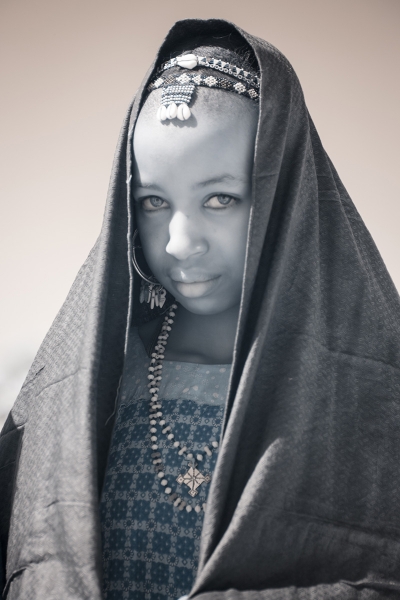
Under the spell
Since childhood, Gold has been fascinated by explorers such as Mary Kingsley, Isabella Bird, and Alexandra David-Neel, intrepid women who traveled to foreign lands to report on cultures and traditions. When Gold herself began traveling, first to Asia in the late 1980s, she noticed a common humanity among various cultures. “While we may have our bar mitzvah, a foreign tribe may have a bull jumping ceremony,” Gold says. “These rituals look different, but the values are the same. We laugh and cry at the same things. I wanted to try to capture that on film.”
Gold began visiting parts of the world that fired her imagination, and she brought along her camera gear. “While friends were going to Paris or London, I was more interested in setting off for those curious corners of the world, such as Timbuktu or Rajasthan—places that seemed to me to be steeped in mystery and intrigue.” She admits these self-assigned trips could be expensive, but because she has no children to support, “I am free to follow my own passion.”
That passion included a desire to highlight the mysterious side—what she terms “the magic realism”—of the places she visited. She’s long used infrared film and knew it could give her that special quality she sought. “I like the way infrared pierces the veil; it has an invisible iridescent quality, a shimmer to it. It illuminates another dimension,” says Gold. “I thought it was the perfect film for these parts of the world where there is so much mystery.”
Using infrared harkened back to her days as a lith printer, a process she learned at Manhattan’s International Center of Photography in the 1990s. “With lith printing no two prints were the same,” says Gold. “I liked the sense of discovery it offered. It was always a dance in the darkroom.”
Infrared film offers her a similar surprise element. “Infrared gives you the mysterious right away. It also sees things you don’t see,” says Gold. “You don’t know exactly where the colors are going to fall. For example, you do know the green leaves are going to turn slightly white but it all depends on how the sun is hitting the leaves. It’s the same with water. It’s impossible to pre-visualize with infrared.
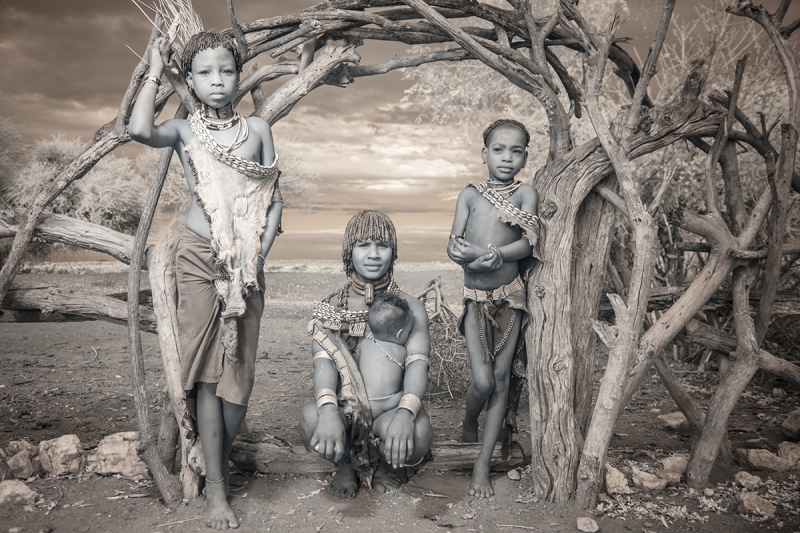
“Many of my early photography mentors talked about the necessity of pre-visualizing your work, but that did not work for me. I want to go on a journey with my photographs and want to be surprised. I love the unexpected.”
Inspired by a friend’s photograph that had been painted, Gold began painting on her own prints, often adding encaustic wax. She sometimes uses extensive post-processing and is fond of split toning. “Taking pictures is just the beginning for me,” says Gold.
In the pre-digital days Gold had to carry four to five cameras—everything from several 35mm cameras loaded with regular and infrared film to a Mamiya and a Hasselblad and film changing bags. “I would freak out at airports and beg the customs people not to open my infrared film canisters. Now it’s a lot easier, and I travel with converted infrared digital cameras.” She usually carries a Canon EOS 5D Mark III.
“Digital has freed me up so much,” says Gold. “I have more freedom in aperture, exposure, and shutter speed. And now for the first time with infrared I can get some idea of what I am shooting.”
Gold captures almost all her subjects in infrared but admits, “It doesn’t always work. I know it has its limitations, but I always give it a try. I always also have a color camera along with me.”
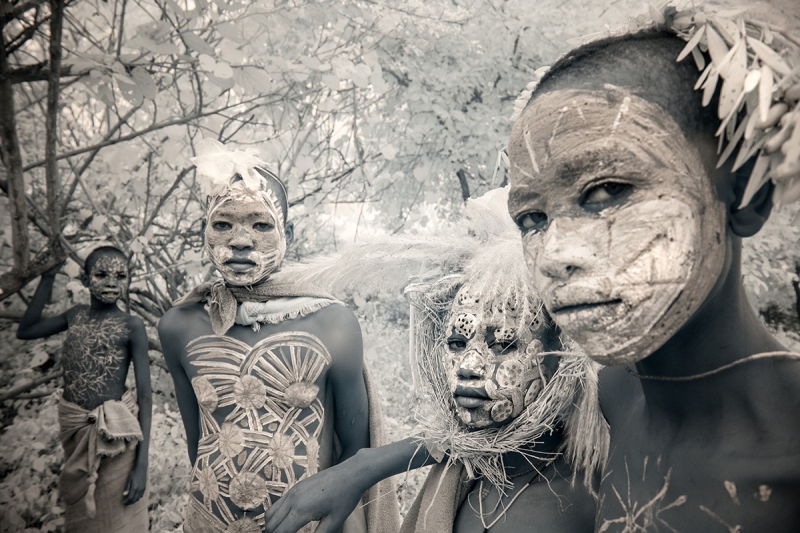
If making memorable photography is about capturing a moment, then Terri Gold’s trip to Niger is a life lesson in the importance of making those moments happen. As she readily admits, it would have been very easy for her to cancel her trip because of all the perceived dangers. “In fact, a week or so after we left Niger, al-Qaeda rebels spilled over into the country from Libya,” she says. “If we had canceled or delayed our trip, we never would have gotten back there.”
But she didn’t cancel. She braved 110-plus degree Fahrenheit heat to document a ceremony in one of the world’s most remote deserts and returned with powerful images. For all the travel warnings, her trip went smoothly. “Any worries about violence and unrest disappeared during our time amongst the welcoming Wodaabe, especially when we camped under a tapestry of the Milky Way accompanied by the chanting of the nomads and the lullabies of their animal herds.”
While she hesitates to describe herself as brave, she says she now understands completely the Wodaabe adage she learned on her trip: Who cannot bear the smoke will never get to the fire.
RELATED: See a gallery of images by Terri Gold.
Robert Kiener is a writer based in Vermont.

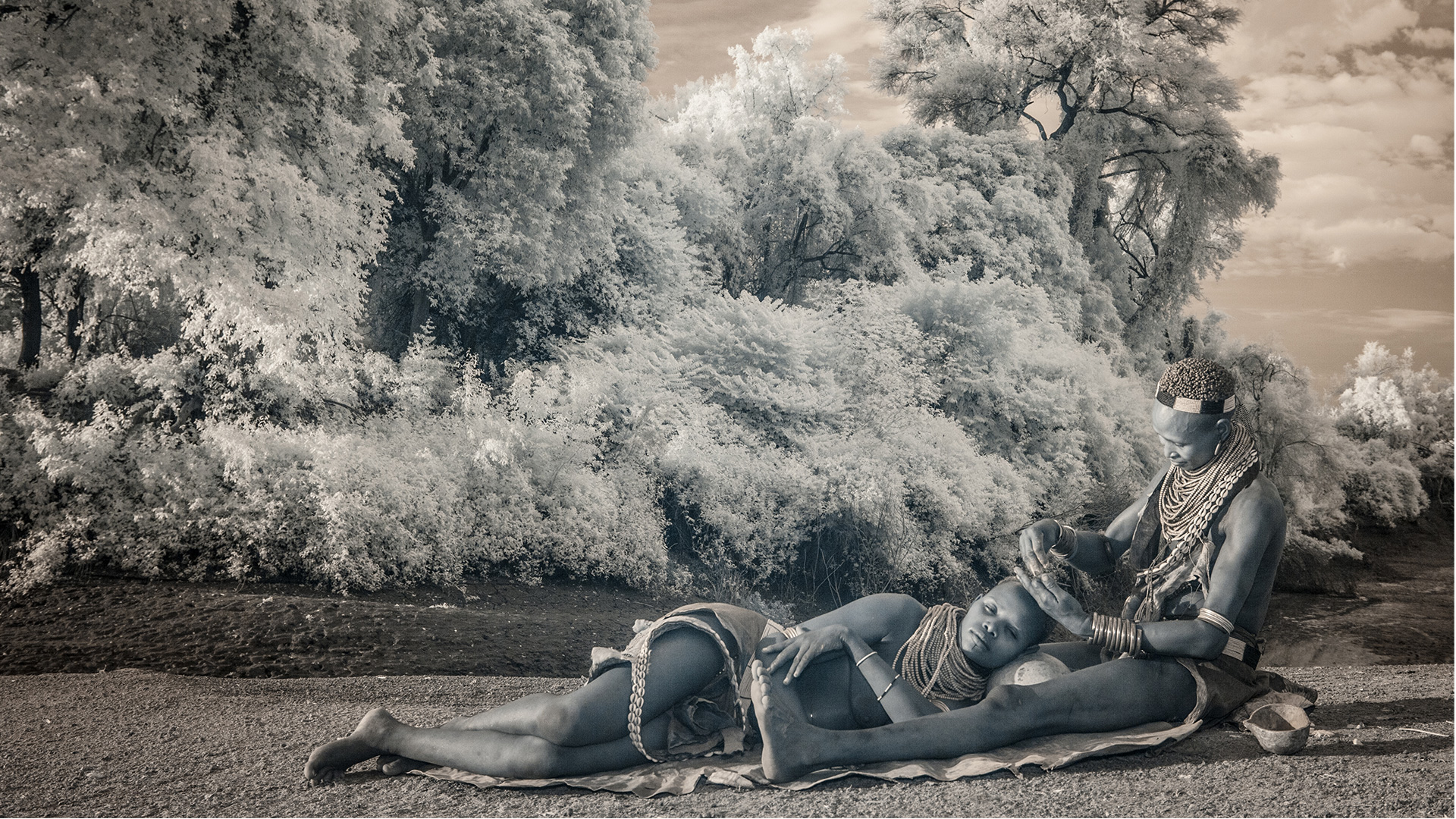
 View Gallery
View Gallery


